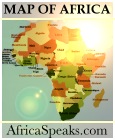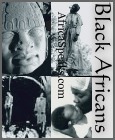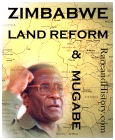Zanu-PF, MDC-T in photo finish
Posted: Thursday, April 3, 2008Herald Reporter
THE contest for the House of Assembly went into a photo-finish with MDC-Tsvangirai ending with 99 seats, Zanu-PF with 97, MDC with 10 and one independent.
Neither major party has an absolute majority and even when the results of three by-elections caused by death of candidates are known, neither will have the 106 seats needed for an absolute majority
Besides the 206 seats contested on Saturday, Muzarabani South was won unopposed by Zanu-PF and three by-elections are pending following the death of MDC candidates. While the MDC-Tsvangirai is likely to win at least two of these, since one is Redcliff and the other is in Bulawayo, it cannot gain the 106 seats needed to hold a majority in the House of Assembly.
While the MDC-Tsvangirai had a small lead in seat numbers, Zanu-PF was ahead in the popular vote.
In the polls for the 206 contested seats, Zanu-PF had won 45,94 percent of the votes, MDC-Tsvangirai 42,88 percent, the MDC 8,39 percent and the minor parties and independent candidates 2,79 percent.
Zanu-PF won an absolute majority of the vote in five provinces: the three Mashonalands, Midlands and Masvingo; and last night came first in Matabeleland South with just under 43 percent of the vote, although that lead was not translated into seats.
MDC-Tsvangirai won the absolute majority of the vote in just two provinces: Harare and Manicaland. No party took an absolute majority of Bulawayo, although MDC-Tsvangirai won all the contested seats with just 47 percent of the vote in a vicious three-way contest, coming first in that province and coming first in Matabeleland North with just under 37 percent of the vote.
In the two rural Matabeleland provinces, three-way fights produced some curious results. In the 12 contested constituencies of Matabeleland South, Zanu-PF came an easy first in the total vote, but won just three seats. MDC came second in the vote, but translated that into seven seats, and MDC-Tsvangirai was third, and with just two seats.
Masvingo, like Matabeleland South, produced an anomalous distribution of seats when compared to the provincial vote. Zanu-PF was an easy winner of the popular vote, taking 52,01 percent of the votes, but only 12 of the 26 seats. The other 14 seats went to MDC- Tsvangirai, although the party only managed 41,61 percent of the popular vote. Many Masvingo seats were won with minute majorities.
Zanu-PF has lost its majority in the House of Assembly for the first time since independence, despite its lead in the popular vote. It tended to win with larger majorities where it was stronger than the opposition parties were winning in their strongholds.
Since the 2000 and 2005 elections, Zanu-PF has lost significant support in Manicaland and some support in Masvingo, although a drop of less than 10 percent in its share of the vote in that province saw the huge cut in seats.
The party held its support in rural Mashonaland and rural Midlands while MDC-Tsvangirai has maintained its support base in the cities and towns, and changed the face of the next Parliament with its large gains in Manicaland and modest advances in Masvingo.
Rural Matabeleland has always tended to concentrate most of the marginal constituencies in Zimbabwe, and the strong three-way fight in that area accentuated that trend. Many seats in the region were won with well under 50 percent of the valid vote.
The ZEC, with the national agents of the candidates monitoring its work, is still compiling the totals for the presidential vote.
But if the voting patterns follow the votes for the MPs fairly closely – with Zanu-PF supporters voting for President Mugabe, MDC-Tsvangirai voters opting for Mr Morgan Tsvangirai and MDC voters voting for Dr Simba Makoni – it is difficult to see how any candidate can reach the total of 50 percent plus one required to avoid a run-off.
Even if almost all those who voted for independent candidates and the minor parties gave their presidential vote to Mr Tsvangirai, he would still fall far short of the total unless a large number of Zanu-PF and MDC voters switched to him in the presidential poll.
A look at the turnout in the four constituencies that did not vote for MPs suggests that even with the bulk of these votes, neither of the two main candidates can avoid a run-off.
Without significant cross-voting, a run-off appears the most likely outcome.Printer friendly version
Send page by E-Mail

Previous Page | Zimbabwe Watch | Historical Views | Home
NOTICE: All articles are the copyright property of the writers. In accordance with Title 17 U.S.C., section 107, some material on this site is provided without permission from the copyright owner, only for purposes of criticism, comment, scholarship and research under the "fair use" provisions of federal copyright laws. Visit: http://www.law.cornell.edu/uscode/17/107.shtml for more details. If you wish to use copyrighted material from this site for purposes of your own that go beyond 'fair use', you must obtain permission from the copyright owner.










